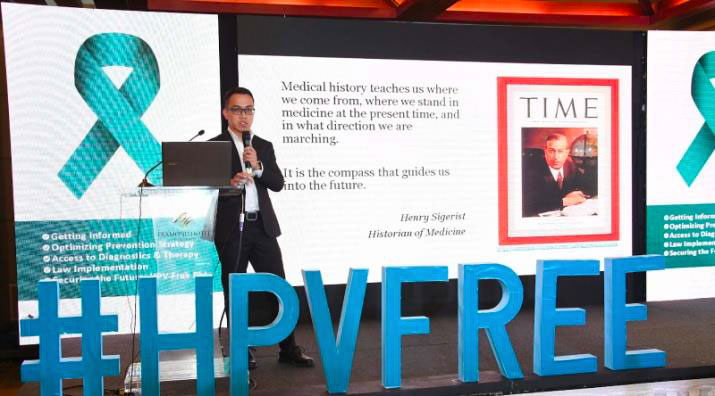In the Philippines, cervical cancer is the second most common cause of cancer-related mortalities among women, next to breast cancer. Every year, 7,277 new cases of cervical cancer are expected and, out of this number, 3,807 deaths will occur due to the disease.
Because of its alarming burden, many consider cervical cancer as an automatic death sentence.
This is particularly true if the disease is already in its late stages because when treatments fail, the prognosis for cancer patients would usually be poor.
Dr. Jasper Andal, Molecular Pathologist and Quality Assurance Officer at St. Luke’s MedicalCenter – Global, and one of the experts that spoke during the ‘Access to Diagnostics and Therapy’ panel discussion of the 8th HPV Summit, made a presentation on the conventional and new diagnostic options in cervical cancer.
The Pap stain test and human papillomavirus (HPV) DNA testing are some of the screening procedures that are used in detecting cancer at its earlier stages. But at its advanced stages, Dr. Andal explained the new diagnostic option called PD-L1 testing which screens the patient’s cancer cells for a high level of the protein biomarker called PD-L1 or programmed cell death ligand-1.
“At the earlier stages of cancer development, the immune system may have the capacity to eliminate cancer cells because they are foreign looking. But cancer cells can develop a mechanism to hide from the immune system by using PD-L1 to stop the immune system from attacking it,” explained Dr. Andal.
“This is where immune checkpoint inhibitors come in. If tumors have a high expression of PD-L1, then an immunotherapy drug can prevent the mechanism that enables cancer cells from hiding from the immune system. This stimulates the immune system to recognize and kill the cancer cells.”
Dr. Andal cited a recent study, wherein 98 patients with previously treated recurrent or metastatic cervical cancer were given an immunotherapy drug to test its efficacy and durability of response to the treatment. 79 percent of the patients had a high PD-L1 expression which determined eligibility for immunotherapy. About 15 percent of the PD-L1 positive patients responded to immunotherapy and among these, 91 percent of patients had a durable response to the treatment for more than six months.
“It is truly remarkable how patient survival is prolonged with this novel treatment. This means that we have more options now for those with advanced cervical cancer which used to be regarded as a hopeless case. From a clinician and a pathologist’s perspective, this opens up a lot of avenues on how best we can service patients,” said Dr. Andal.
Immunotherapy as a treatment option for cervical cancer is already approved by the U.S. Food and Drug Administration (FDA). In the Philippines, the FDA already approved immunotherapy as a treatment option for non-small cell lung cancer, gastric, bladder, Hodgkin lymphoma, melanoma, head and neck cancers, and cervical cancer. Clinical trials are underway in the country to prove the efficacy and safety profile of the drug in fighting different types of cancer in the local setting.
The developments in diagnosis and treatment of advanced cervical cancer may be promising, but Dr. Andal still emphasized that prevention and early detection are still primary solutions towards building an HPV and cervical cancer-free future.
“The earlier you catch the cancer, the better it is for the treatment and survival of the patient. From a system-wide perspective, if you improve the healthcare infrastructure and make medical support for diagnostic tests universal, regardless of patients’ financial capacity, that would enable more Filipinas to get early screening for cancer. That’s a long-term goal. The short-term goal is to improve testing and screening in the country and increase the number of specialists and facilities especially in the provinces,” he said.
The implementation of the National Integrated Cancer Control Act, one of the critical goals towards an HPV-free future, was discussed during the 8th HPV Summit as a pillar that would pave the road towards cervical cancer elimination in the Philippines. The law aims to promote access to prevention and early detection check-ups, increase access to diagnosis and treatment, provide better healthcare assistance through the involvement of PhilHealth and a proposed Cancer Assistance Fund, and build a better supportive care system for cancer patients regardless of age, gender, and type and stage of the disease.
PH-KEY-00078



